When getting down to some serious knife sharpening business, you have probably heard of the word angle, a little too much. Rightly so, determining the best angle to sharpen a knife is an important first step which cannot be stressed enough.
The best angle to sharpen a knife is largely determined by the purpose of the knife, blade thickness, steel, as well as the knife users’ preference. Different knives have different sharpening angles. For most kitchen knives, however, the commonly accepted sharpening angle is from 15 to 20 degrees.
Table of contents
Importance of choosing the right angle
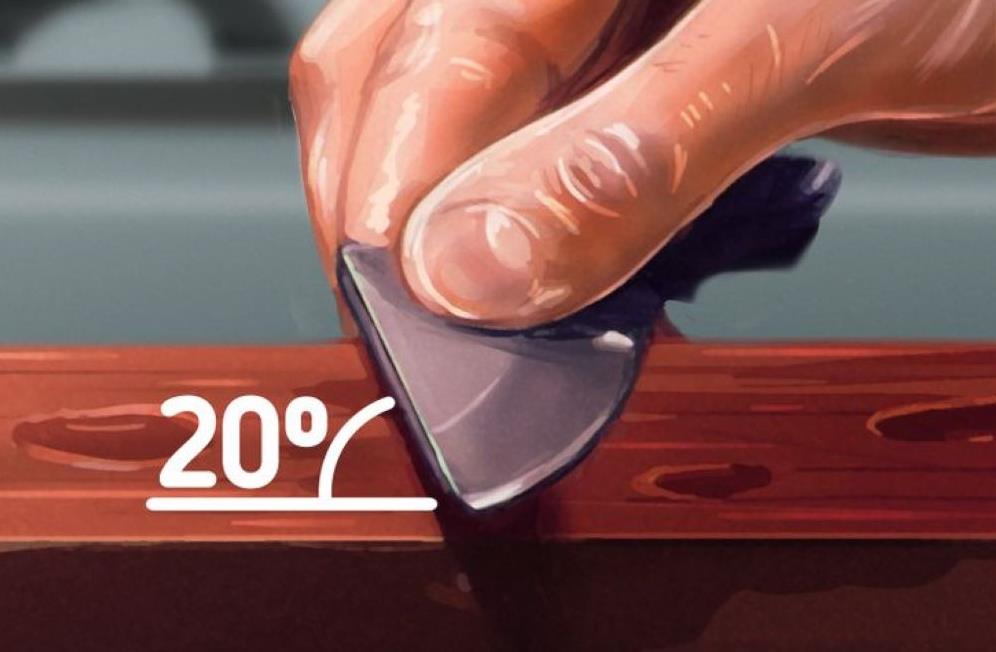
Choosing the right angle, or bevel, for your knife is an important first step that determines knife sharpness as well as durability of the blade edge. The correct angle will ultimately determine what you will be using your cutlery tool for, such as filleting a fish, cutting fruits and vegetables, or even shaving your beard (just kidding).
As a general rule, remember that lower (smaller) sharpening angles offer finer slicing as well as detailed trimming for your cutlery tasks. This is because lower angles create sharper knives. On the other hand, wider angles offer tougher cutlery work to be done. This is because it creates a stronger edge:
Acute Angles = Sharper Edge whereas Obtuse Angles = Durable Edge
Another important thing to remember is that most re-sharpening tasks should be done at the standard, factory bevels of your cutlery tools. Otherwise, sharpening at in-correct angles will most likely damage your tools.
Let us move on to discuss further about edge angles, their measurements, and how to select the best angle to sharpen a knife:
What is an edge angle?
The edge angle, or the existing angle, is simply the angle at which the bottom edge of the knife blade (running from the heel to the tip) cuts into the side of the knife, creating a sharp tip. In simpler words, it is the grounded surface that creates the knife’s edge.
Closer inspection of this surface will reveal a slight incline on the knife edge known as the bevel. This might be present on one or both sides of the knife. If there is an angle or incline on one side only, it is a single bevel knife. Angles on both sides are called double bevel knives.
How to measure edge angle?
You can measure the edge angle of a knife by measuring it from the tip of the knife to the outer edge of the spine. Edge angles are measured either as degrees per side or including both sides. When discussing sharpening angles, angles are measured based on a single side only.
When sharpening a knife, it is important to maintain its original factory angle, or geometry. This angle is largely based on the following two factors:
- Width of knife
- Intended use of knife
Goniometer
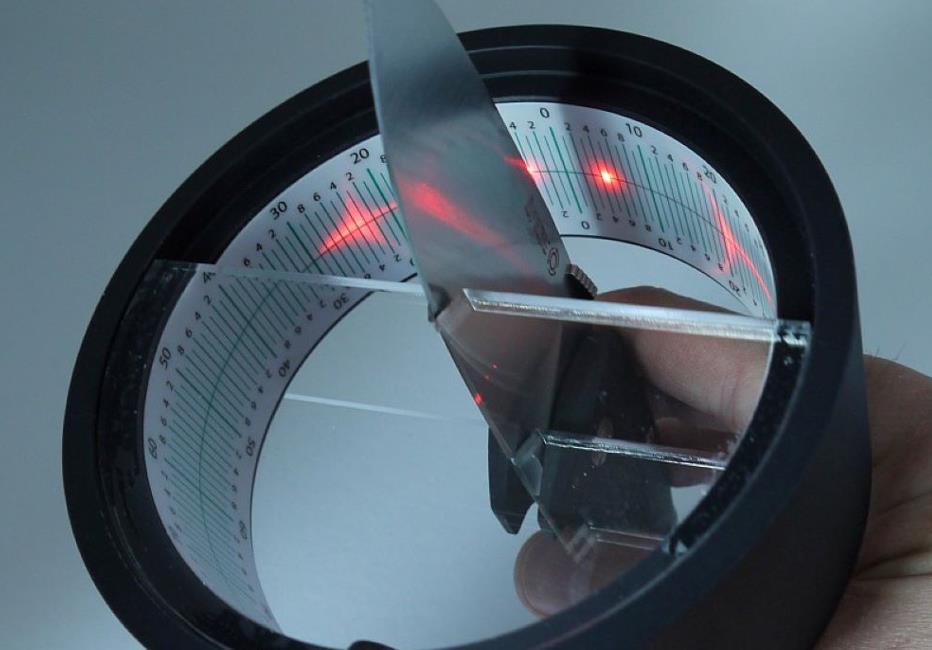
Goniometer is a measuring instrument that is used to measure angles of knives or other tools by means of reflection of a low powered laser beam. The laser beam is reflected on to a graduated circle (similar to a protractor) from the facets of a knife’s cutting edge. The circle contains markings which are indicative of angles.
Measuring the existing angle
You won’t happen to have a goniometer handy, and we don’t expect you to, either. Here is a simpler way to measure your knife’s angle using a marker instead:
- Use a marker to colour the bevel of your knife.
- Mark the entire edge of the knife (from the knife’s tip to the shoulder)
- Mark both sides of the bevel.
- Position your sharpener at an angle that is closest to your knife’s expected bevel angle.
- Run a few strokes of your knife against the sharpener to assess where exactly the markings are coming off. Remember, we are not sharpening yet.
- Inspect the markings to indicate the angle.
- If the markings come off at the very tip of the knife’s cutting edge, it means that the angle is too obtuse.
- If the markings are coming off at the heel of the knife only, it indicates that the angle is too acute.
- Adjust the angle to make it wider in case it’s too acute, or smaller in case it is too obtuse.
- Adjust the angle by making a few more strokes, adjusting till you touch the entire knife bevel.
When you touch the entire bevel of your knife, you have found your existing knife angle. This is the angle you will sharpen your cutlery tool at.
Selecting the best angle to sharpen a knife
Now that you know how to measure the existing edge angle and how angles determine sharpness and durability, we can move on to select the best angle to sharpen a knife.
Factors that determine the right sharpening angle for your knife
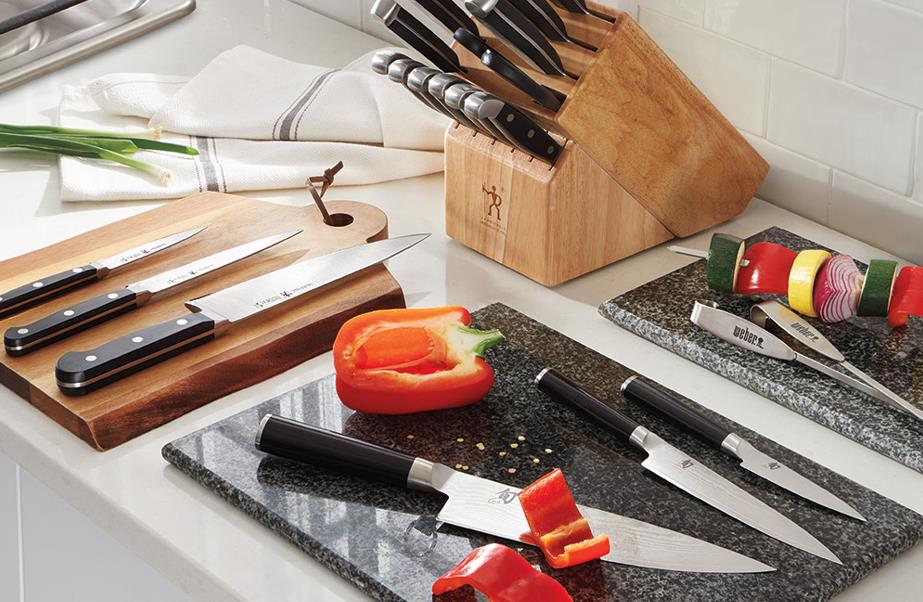
Following factors determine the right sharpening angle for any cutlery tool:
Intended purpose of knife
For precise cutting and chopping tasks, smaller angles are chosen in order to create a sharper knife edge. For tougher jobs such as slicing through meat and bones, wider angles are used that help to create durable knife edges.
Steel
Steel hardness is a determinant of knife durability and is measured using the Hardness Rockwell C scale or HRC. Steel hardness impacts upon the sharpening angle of a knife as different grade steels hold differing yield strengths.
Harder steels can easily be sharpened at smaller angles since they have higher yield strength (maximum stress they can tolerate without deforming). On the other hand, steels that are softer require sharpening at steeper angles to tolerate stress.
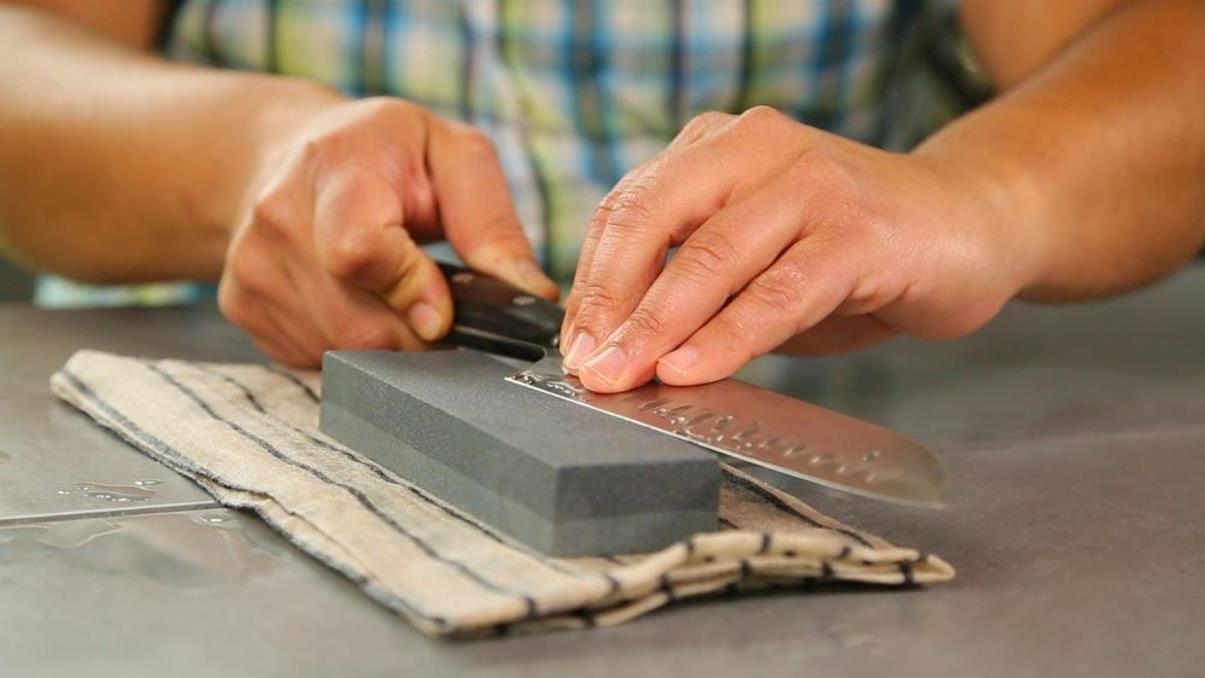
Blade thickness
The blade thickness also determines the sharpening angle of a knife. If your knife has a thin blade edge, it will be easier to sharpen it down to lower angles. Thicker blades, on the other hand, mean more material from the edges has to be removed to create sharper edges which requires lots of patience.
User Preference
Lastly, user preference is also an important determinant of the sharpening angle. A knife user may prefer sharpness over durability, or durability over sharpness. Nevertheless, he or she may also go for a balance between the two.
Handpicked for you
True cutting power in the palm of your hand
Different sharpening angles
Different cutlery tools require different sharpening angles. Here is a breakdown of different sharpening angles:
Less than 10 degrees
Lower edge bevels, such as under 10 degrees, are suitable for cutting through softer materials. Such a small angle means it cannot take on much abuse as their edges are quite delicate. Razor blades are sharpened at such low angles of 7-8 degrees, meant for cutting hair only.
10 to 17 degrees
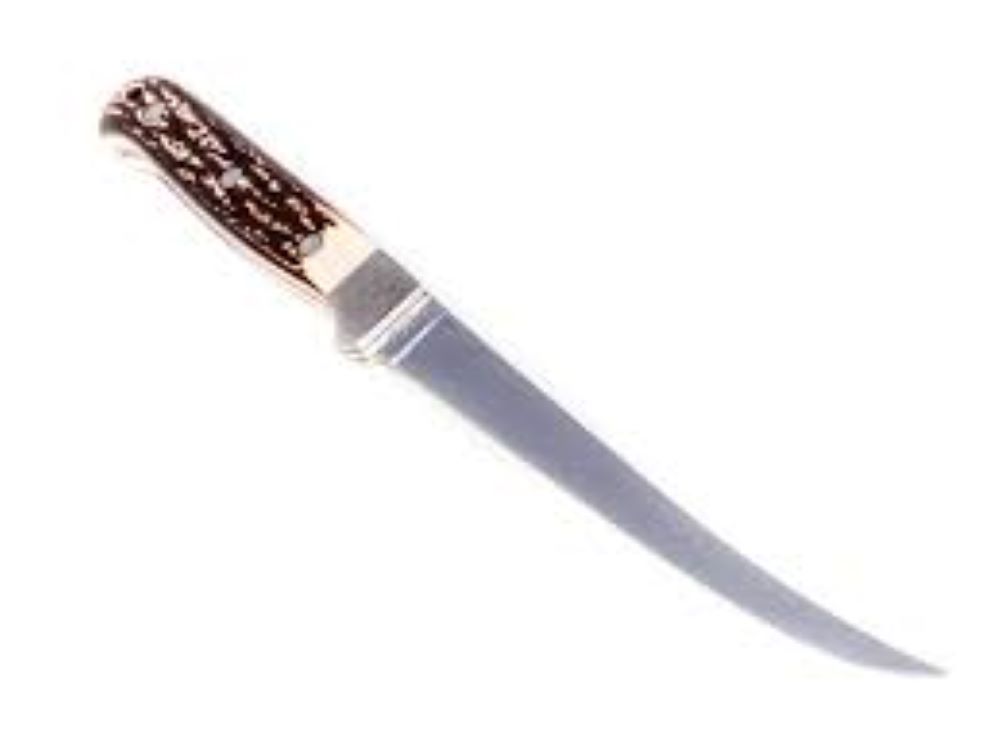
Sharpening angles falling under this category create very fine edges that are meant for precise cutting and slicing actions. However, such an edge is still too weak and less durable. Hence, no chopping motions can be made. Also, bear in mind that harder steels are brittle and cannot be sharpened at such low angles.
17 to 22 degrees
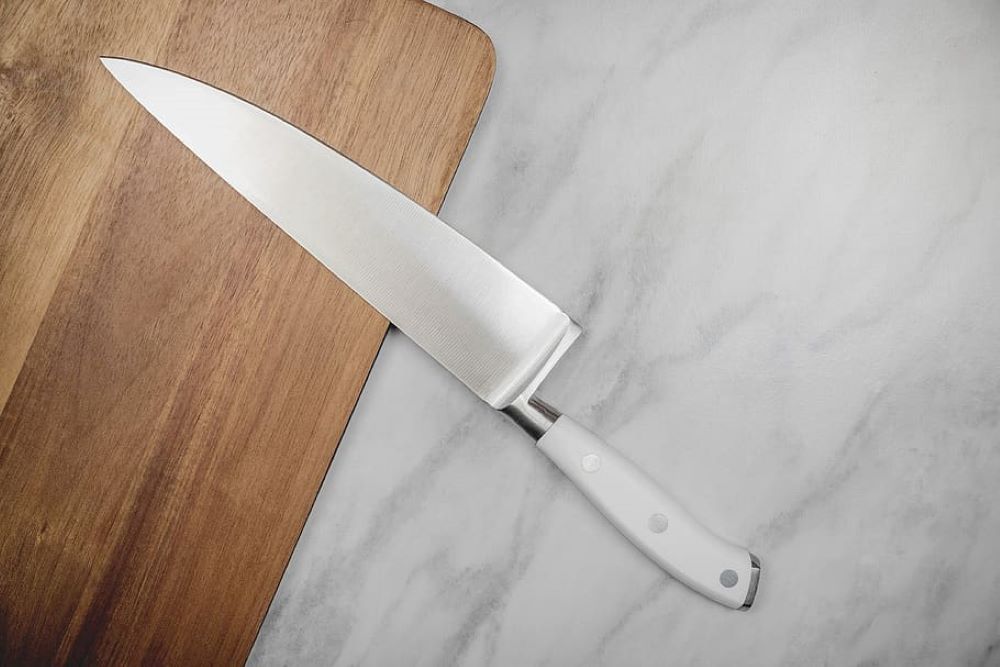
Almost all standard kitchen knives that are sharpened fall in this category. It can be declared as the best angle for sharpening kitchen knives. Most Japanese knives are sharpened at 17 degrees, while Western knives are sharpened at around 20 degrees. Many chefs believe 15 to 20 degrees as the ideal sharpening angle range, which offers the best balance between sharpness and durability.
22 to 30 degrees

Knife edges that are sharpened to these angles are particularly durable. Outdoor knives are usually sharpened to these angles, offering durability over sharpness. However, you may not see any difference in sharpness as compared to lower angles. This means you can perform your slicing and chopping duties alongside the tougher tasks meant for abuse.
Over 30 degrees
Any cutlery tool sharpened over 30 degrees is extremely durable. Consequently, the sharpness of such tools is compromised. Axes, cleavers, machetes are sharpened above 30 degrees. These tools experience real abuse, the survival of which is ensured by sharpening at such wide angles.
Knife angles chart
Here is a chart to help you assess the various recommended angles for different cutlery tools:
| Cutlery Tools | Recommended Angle |
| Cleavers / Axes / Machetes | Over 30 degrees |
| Pocket Knives / Hunting knives / Survival knives | 25-30 degrees |
| Standard kitchen knives / Boning knives / Chef knives | 17-25 degrees |
| Fillet knives / Paring knives / Japanese knives | 12-17 degrees |
| Razor blades / Straight razor / Exacto knife or precision knife | 7 to 12 degrees |
Tips on selecting the right sharpening angle
Selecting the best angle to sharpen a knife largely depends on your intended purpose of use amongst other factors. Here are some tips for selecting the best angle to sharpen a knife:
- If you want a sharp knife, you will go for an angle that is smaller, such as between 15-17 degrees. More sharpness, however, results in more likely chipping and less durability.
- Go for larger angles, such as between 20-25 degrees, for more durable knife edges. This further means less sharpening maintenance is required.
- For best results, select an angle that best balances between sharpness and durability.
- Sharpen in an area with good lighting. Good visibility leads to a sharpening job that is well-executed.
- Select a knife sharpener that you are comfortable in using.
- Your sharpener must fit the steel type of your blade.
- Lastly, ensure there are no distractions when sharpening to ensure safety.
FAQS
For beginners, what bevel angle can be used as a good starting point?
A good starting point for beginners that works well is 20 degrees bevel angle. This angle works well for most cutlery tools.
What is a knife sharpening angle guide?
A knife sharpening angle guide is an instrument that helps you to sharpen your knives at your desired angle. These tools are not sharpeners, and merely guide you in sharpening.
We hope you found our knife sharpening angle guide a useful one.
For more knife sharpening guides and related information, visit our HDMD blog. Or, discover our extensive razor-sharp, hand forged knives here.












